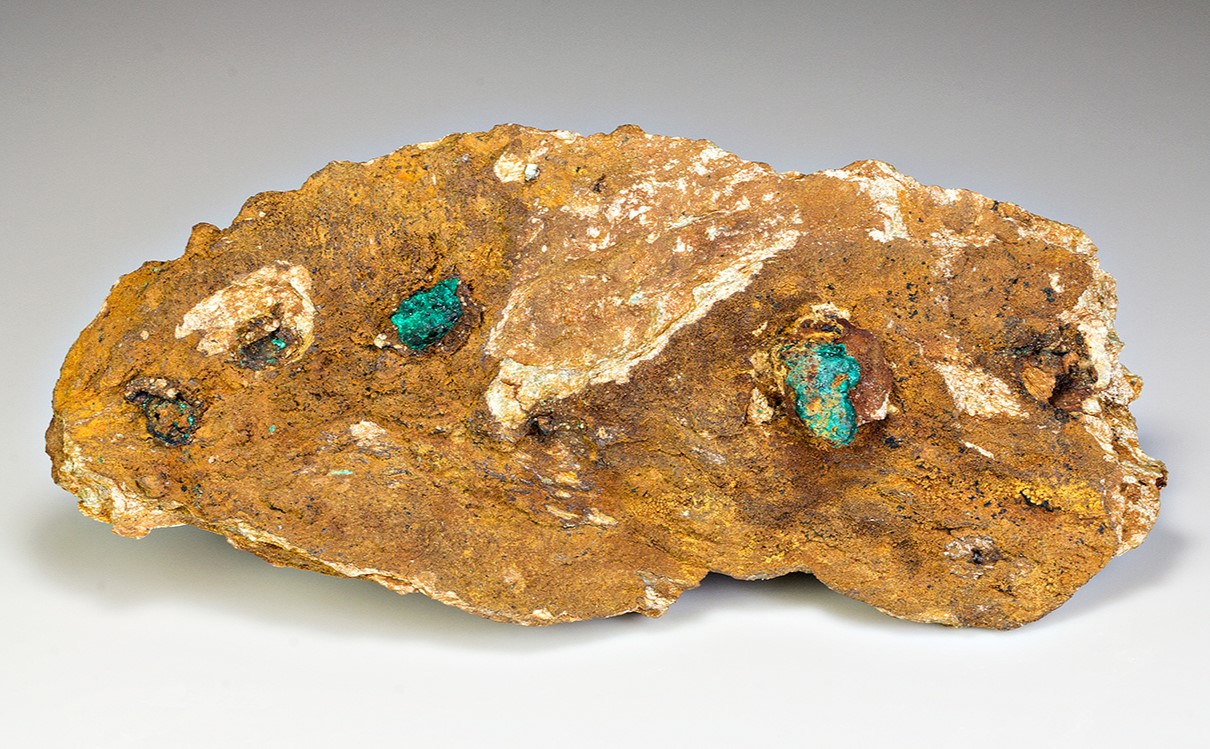
Euchroite is a rare and stunning mineral that captivates collectors and geologists alike. But what makes Euchroite so special? This vibrant green gem, often found in copper-rich environments, boasts a unique crystal structure and fascinating history. Discovered in Hungary in the early 19th century, it quickly became a prized specimen for its striking appearance and rarity. Euchroite's chemical composition includes copper, arsenic, and oxygen, forming beautiful orthorhombic crystals. Its name, derived from Greek, means "well-colored," reflecting its vivid hue. Whether you're a mineral enthusiast or just curious, these 35 facts about Euchroite will deepen your appreciation for this extraordinary mineral.
Key Takeaways:
- Euchroite, a rare and vibrant green mineral, is valued by collectors and used in educational settings. Its unique properties and fascinating history make it a captivating subject for study and display.
- With its striking green color and interesting formation, Euchroite is known as the "emerald of the mineral world." Collectors treasure it, and it continues to be a subject of study for geologists and mineralogists.
What is Euchroite?
Euchroite is a rare mineral that captivates geologists and collectors alike. Its vibrant green color and unique properties make it a subject of fascination. Here are some intriguing facts about this mineral.
- Euchroite is a copper arsenate hydroxide mineral.
- Its chemical formula is Cu2AsO4OH·3H2O.
- The mineral was first discovered in 1823.
- Euchroite was named by August Breithaupt, a German mineralogist.
- The name "Euchroite" comes from the Greek words "eu" (well) and "chroma" (color), referring to its striking green hue.
Physical Properties of Euchroite
Euchroite's physical characteristics are as fascinating as its chemical composition. These properties help in identifying and studying the mineral.
- Euchroite crystals are typically prismatic or tabular.
- The mineral has a vitreous luster, giving it a glass-like appearance.
- Its hardness on the Mohs scale ranges from 3.5 to 4.
- Euchroite has a specific gravity of about 3.39.
- It exhibits perfect cleavage in one direction.
Where is Euchroite Found?
Euchroite's rarity makes its locations of discovery particularly noteworthy. These places are often sought after by mineral collectors.
- The type locality for Euchroite is Libethen, Slovakia.
- Significant deposits have also been found in Cornwall, England.
- Other notable locations include Germany and the United States.
- In the U.S., Euchroite has been found in Arizona.
- The mineral is often associated with other copper minerals like malachite and azurite.
Uses and Applications of Euchroite
Though not widely used in industry, Euchroite has its own niche applications and significance.
- Euchroite is primarily valued as a collector's mineral.
- Its vibrant color makes it a popular choice for mineral displays.
- The mineral is also used in educational settings to teach about mineralogy.
- Euchroite specimens can be found in museums around the world.
- It is sometimes studied for its crystallographic properties.
Interesting Facts About Euchroite
Beyond its basic properties and uses, Euchroite has some unique and lesser-known aspects that add to its allure.
- Euchroite can form pseudomorphs, where it replaces another mineral while retaining the original mineral's shape.
- The mineral can sometimes be found in oxidized zones of copper deposits.
- Euchroite's green color is due to the presence of copper in its structure.
- It is often found in small, well-formed crystals.
- Euchroite is considered a secondary mineral, meaning it forms from the alteration of primary minerals.
Collecting and Preserving Euchroite
For those interested in collecting Euchroite, there are some important considerations to keep in mind.
- Euchroite specimens should be kept in a dry environment to prevent degradation.
- The mineral can be sensitive to light and may fade over time if exposed.
- Collectors often store Euchroite in display cases to protect it from damage.
- High-quality specimens can be quite valuable.
- When handling Euchroite, it's important to be gentle due to its relative softness.
Fun Facts About Euchroite
Let's wrap up with some fun and quirky facts about this fascinating mineral.
- Euchroite is sometimes referred to as the "emerald of the mineral world" due to its color.
- The mineral has been featured in various mineralogical publications.
- Euchroite can fluoresce under ultraviolet light, though this is rare.
- Some collectors specialize exclusively in copper minerals, with Euchroite being a prized addition.
- Despite its rarity, Euchroite continues to be a subject of study for mineralogists and geologists.
The Fascinating World of Euchroite
Euchroite, a rare and captivating mineral, has a lot to offer. Its vibrant green color and unique crystal structure make it a standout in any collection. Found mainly in Slovakia, this mineral is a copper arsenate hydroxide, which gives it its distinct hue. Collectors and geologists alike appreciate its beauty and rarity.
Euchroite's formation involves hydrothermal processes, often in association with other copper minerals. This makes it a valuable specimen for studying mineralogical processes. Despite its beauty, euchroite isn't widely known outside of specialized circles, adding to its allure.
Whether you're a seasoned collector or just starting, euchroite is a gem worth exploring. Its unique properties and striking appearance make it a fascinating subject. So next time you come across this mineral, take a moment to appreciate its beauty and the geological wonders it represents.
Frequently Asked Questions
Was this page helpful?
Our commitment to delivering trustworthy and engaging content is at the heart of what we do. Each fact on our site is contributed by real users like you, bringing a wealth of diverse insights and information. To ensure the highest standards of accuracy and reliability, our dedicated editors meticulously review each submission. This process guarantees that the facts we share are not only fascinating but also credible. Trust in our commitment to quality and authenticity as you explore and learn with us.
